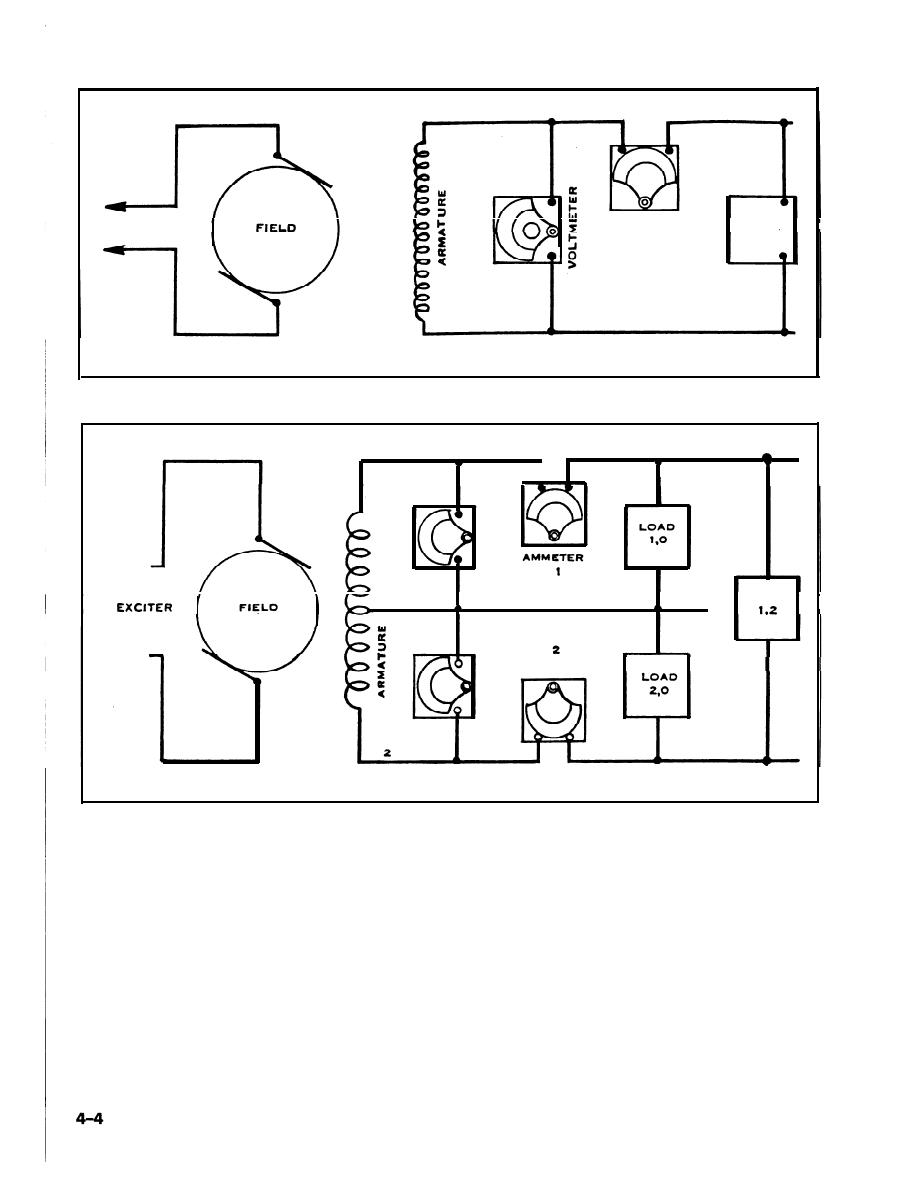

Custom Search
|
|

|
||
 TM 5-685/NAVFAC MO-912
LOAD
TO E X C I T E R
Figure 4-5. Two-wire, single-phase alternator.
1
I
l
LOAD
0
TO
Figure 4-6. Three-wire, single-phase alternator.
of single-phase windings spaced 120 electrical de-
ammeters (or equivalent) are required to determine
grees apart around the armature. One electrical
the load in kilovoltamperes (kVA).
degree is equivalent to one degree of arc in a two-
pole machine, 0.50 degree of arc in a four-pole ma-
phases. Two-phase power is used in only a few lo-
chine, 0.33 degree of arc in a six-pole machine, and
calities. Six-phase is primarily used for operation of
so on. The three single-phase windings are con-
rotary converters or large rectifiers. Three-phase
nected in series to form the delta connection, and
alternators are the most widely used for power pro-
the terminals are connected to the junction point of
duction. Polyphase alternators have capacities from
each pair of armature coils (see fig 4-7). The total
3 kW to 250,000 kW and voltage from 110 V to
current in a delta-connected circuit is always equal
13,800 V. Two general types of three-phases alterna-
to the vector sum of currents in two-phase wind-
tor windings are the delta winding used in three-
ings. The instantaneous current flows out to the
wire, three-phase alternators, and the star or wye
load through two windings and returns from the
winding used in four-wire, three-phase types.
load through the third winding. Since the coils are
Three-wire, three-phase alternators have three sets
|
 |
|
 |
||